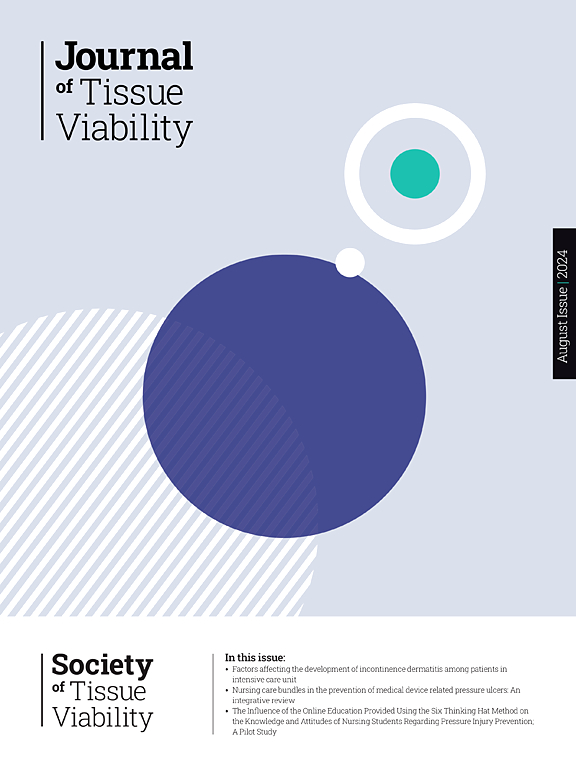Wound education opportunities for rural and regional health care sectors of Australia. A scoping review
IF 2.4
3区 医学
Q2 DERMATOLOGY
引用次数: 0
Abstract
Objective
The aim of this review was to examine the existing literature describing wound care education opportunities for healthcare professionals working in rural and regional areas of Australia.
Design
A scoping literature review was undertaken in December 2023, aligned with PRISMA-ScR guidelines, and searched academic databases and grey literature with no publication date limitations.
Findings
This scoping review identified limited wound care education programs tailored for rural and regional Australia. Most were delivered by nurses online or via video conferencing as an educational program to improve clinicians’ access to evidence-based knowledge. One program offered ongoing mentorship. Consistent positive outcomes included increased confidence among health professionals and improved quality patient care. None of the seven studies reviewed focused specifically on wound care for Indigenous populations.
Discussion
While there are wound care education opportunities, when reviewed against the National Rural and Remote Generalist Framework (2023), the specific needs of health care professionals managing the diversity of presenting wounds in rural and regional health care sectors has not been well described in the literature.
Conclusion
Despite a paucity of literature, anecdotally, there is a clear need for healthcare professional wound care education to be tailored to the specific issues in rural/regional areas.
澳大利亚农村和地区卫生保健部门的伤口教育机会。范围审查。
目的:本综述的目的是检查现有的文献描述伤口护理教育机会的卫生保健专业人员在澳大利亚农村和地区工作。设计:根据PRISMA-ScR指南,于2023年12月进行了范围文献综述,并检索了没有出版日期限制的学术数据库和灰色文献。研究结果:该范围综述确定了为澳大利亚农村和地区量身定制的有限伤口护理教育计划。大多数课程由护士在线或通过视频会议提供,作为一项教育计划,以改善临床医生对循证知识的获取。其中一个项目提供持续的指导。持续的积极结果包括卫生专业人员的信心增强和患者护理质量的改善。所审查的七项研究中没有一项专门关注土著人口的伤口护理。讨论:虽然存在伤口护理教育机会,但在对照国家农村和远程全科医生框架(2023)进行审查时,文献中没有很好地描述在农村和区域卫生保健部门管理伤口多样性的卫生保健专业人员的具体需求。结论:尽管缺乏相关文献,但显然需要针对农村/地区的具体问题进行医疗保健专业伤口护理教育。
本文章由计算机程序翻译,如有差异,请以英文原文为准。
求助全文
约1分钟内获得全文
求助全文
来源期刊

Journal of tissue viability
DERMATOLOGY-NURSING
CiteScore
3.80
自引率
16.00%
发文量
110
审稿时长
>12 weeks
期刊介绍:
The Journal of Tissue Viability is the official publication of the Tissue Viability Society and is a quarterly journal concerned with all aspects of the occurrence and treatment of wounds, ulcers and pressure sores including patient care, pain, nutrition, wound healing, research, prevention, mobility, social problems and management.
The Journal particularly encourages papers covering skin and skin wounds but will consider articles that discuss injury in any tissue. Articles that stress the multi-professional nature of tissue viability are especially welcome. We seek to encourage new authors as well as well-established contributors to the field - one aim of the journal is to enable all participants in tissue viability to share information with colleagues.
 求助内容:
求助内容: 应助结果提醒方式:
应助结果提醒方式:


